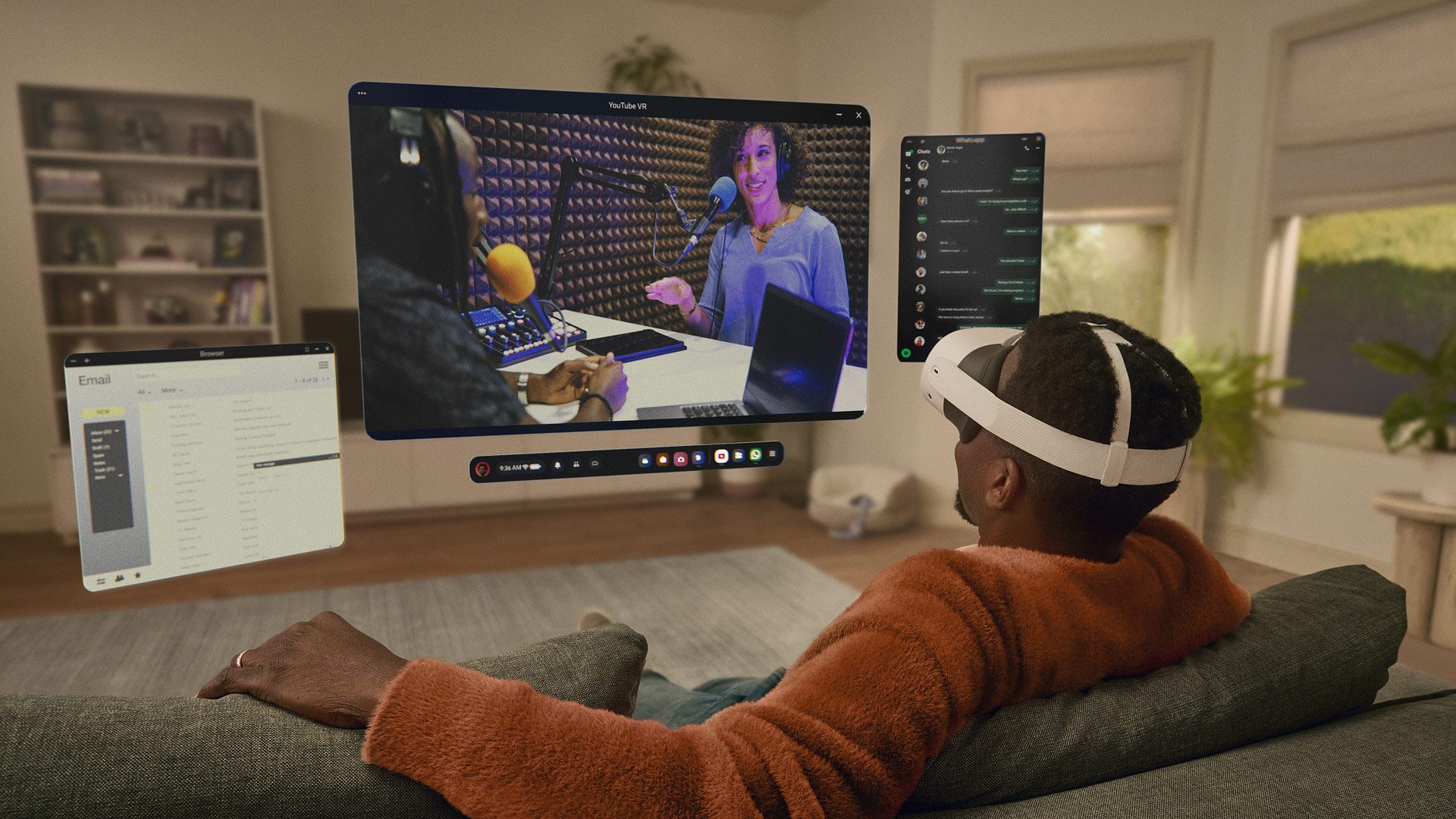Meta continues its reign as the XR industry’s dominant player, with its most recent moves signaling a shift into a new era for the company—and thus the industry at large. This year saw the introduction of the Meta Orion AR glasses prototype and the Quest 3S headset—two pieces of hardware that are not only crucial to Meta’s future but will be pivotal in shaping the industry’s direction as a whole.
One of Meta’s most significant announcements this year was the unveiling of the Meta Orion AR glasses prototype. Meta has long been signaling its ambitions in the AR space, and the Meta Orion prototype represents a major step toward that vision. With a compact form-factor and an impressive 70-degree field of view, Meta is aiming to push the boundaries of what AR hardware can achieve.
Meta’s Orion AR glasses stand as a benchmark for the state-of-the-art in AR glasses today. Unlike similarly sized AR devices—which suffer from a narrow field-of-view that make content appear constrained—Meta Orion’s 70-degree FoV is just scraping the boundary of ‘wide enough to be useful’. Achieving a compact form-factor and a wide field-of-view in the same package is crucial for making AR feel more seamless and practical in daily use.
It will be years yet before Meta ships something like Orion, but it’s an intentional ‘flag in the ground’ moment for the company.



Meta is not a VR company, they are an advertising company trying to create more opportunities to advertise. Hence the subsidized headsets, mandatory online account and smartphone app and neglect of solid PCVR functionality.
Uh… What?
While Meta does make a first party app for PCVR, it seems like people constantly have issues with it (ex. it does not support Intel cards for video encoding). It would not matter as much if third party apps could use the USB cable for network communication but Meta headsets refuse to use USB network adapters so the only real option for third-party streaming apps is wifi, which has it’s own problems.
It just seems like despite many people using a Meta headset solely for PCVR, Meta has put in the bare minimum for PCVR functionality.
I’m not sure what you mean here. Steam VR works with it plugged in without any other 3rd party tools as long as you at least installed the drivers from the Meta app. Playing an online game on PCVR uses the PC’s NIC, not the headset’s. What do you need a USB network adapter for?
I agree the official software kinda sucks; but that’s mostly because there are so many 3rd party tools that work better as Meta lags behind on what would actually be useful. Shit, it’s only recently that you can do multiple flat windows in 3D environments with the Q3 only; 3rd party tools have shown that was possible even on the Q2.
Yes, wired PCVR streaming works, but only for Meta’s own streaming software. If you want to use Steam Link, Virtual Desktop, ALVR or Wivrn, maybe for the unique features they afford, you are stuck with wifi unless you use hacky adb commands which the vast majority of people are not going to do.
What I meant by the USB NIC point is that the quest has a usb port to connect to a computer, but it can also connect to peripherals like a keyboard or controller. Weirdly though, the quest will refuse to use a USB NIC even though android normally would use it.
All of those things you mentioned are specifically made for wirelessly streaming so of course they will use wifi… That’s their primary function and they don’t really offer many differences from the official wireless method other than finer control over the bitrate and such. If you’re physically plugged in, they aren’t needed.
And again, you can use SteamVR (not Steam Link, which is their remote play service) with just the cable. No wifi needed. I’m literally doing it right now.
I think they’re trying to say you cant create/buy someone else’s wireless PCVR hardware solution. As in someone makes a program and 2 USB adapters to line of sight transmit wirelessly, so it’s just plug and play. No tweaking settings or worrying about networking to minimize latency.